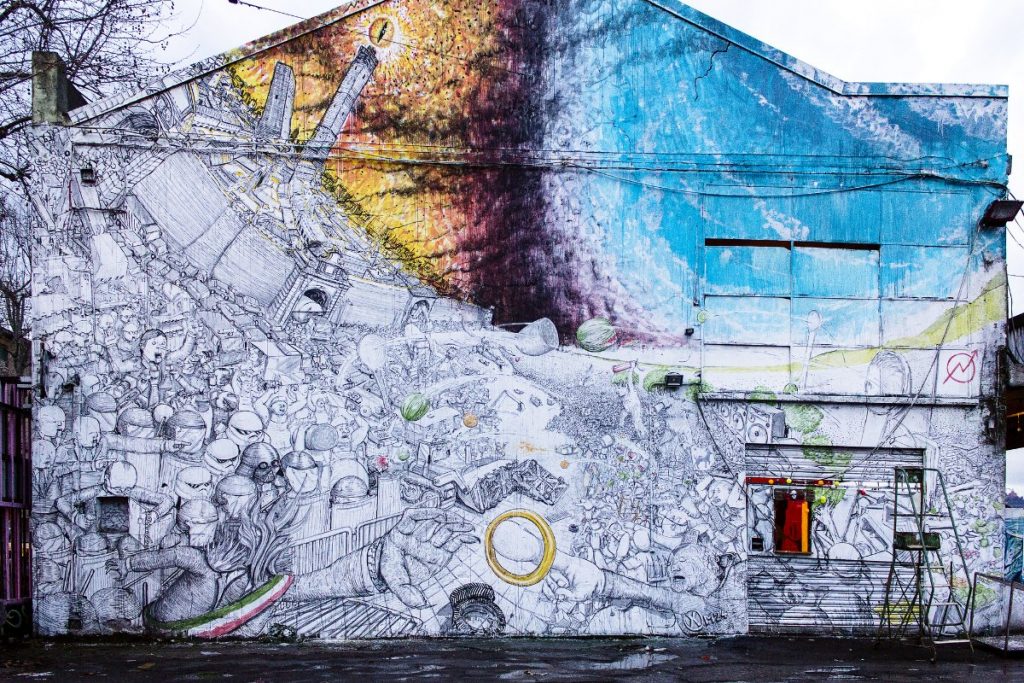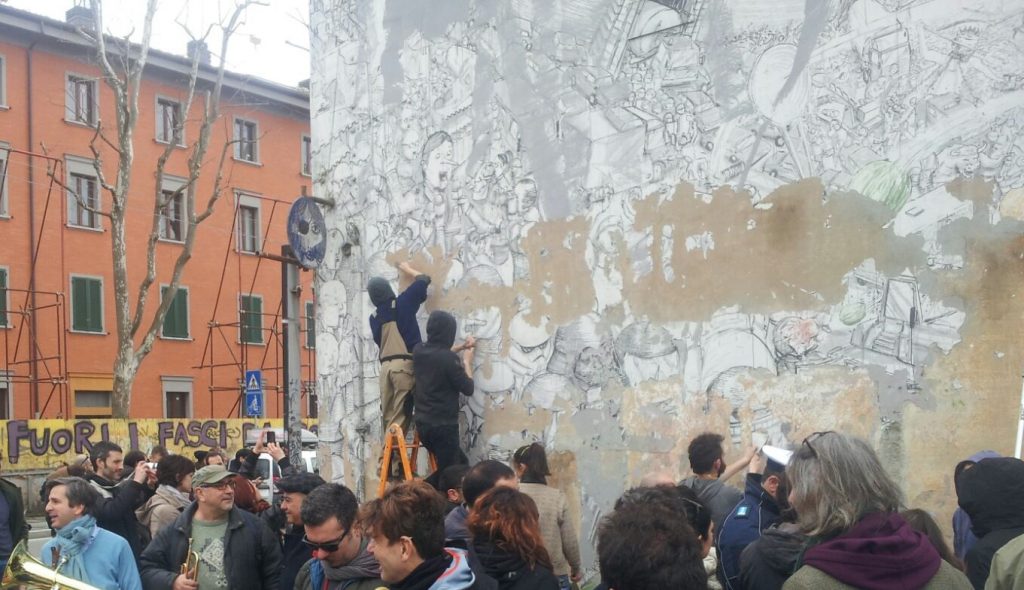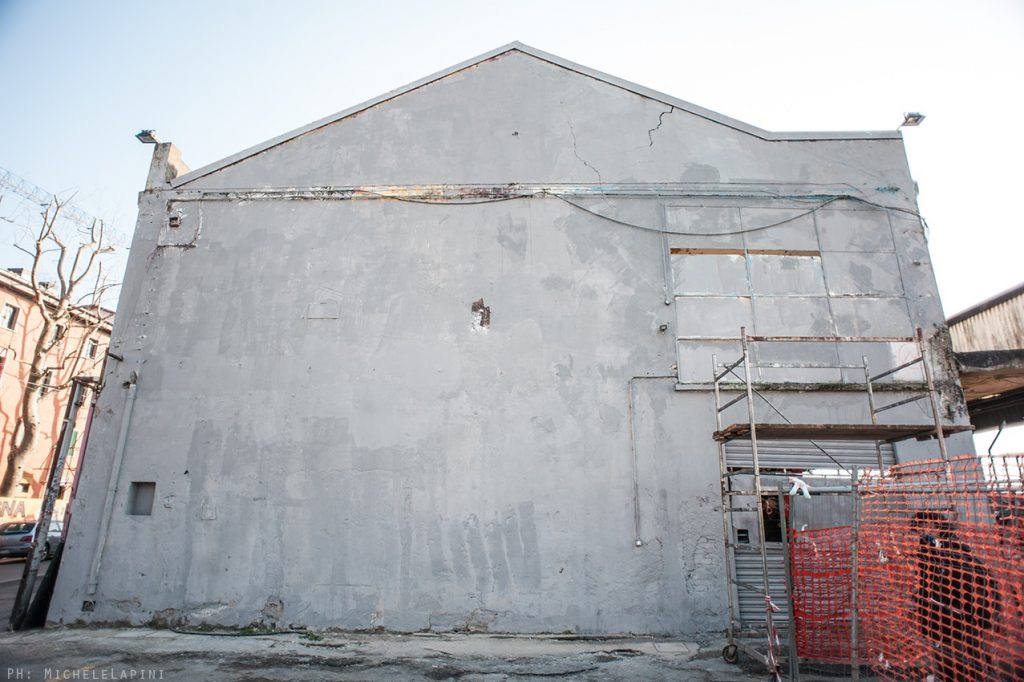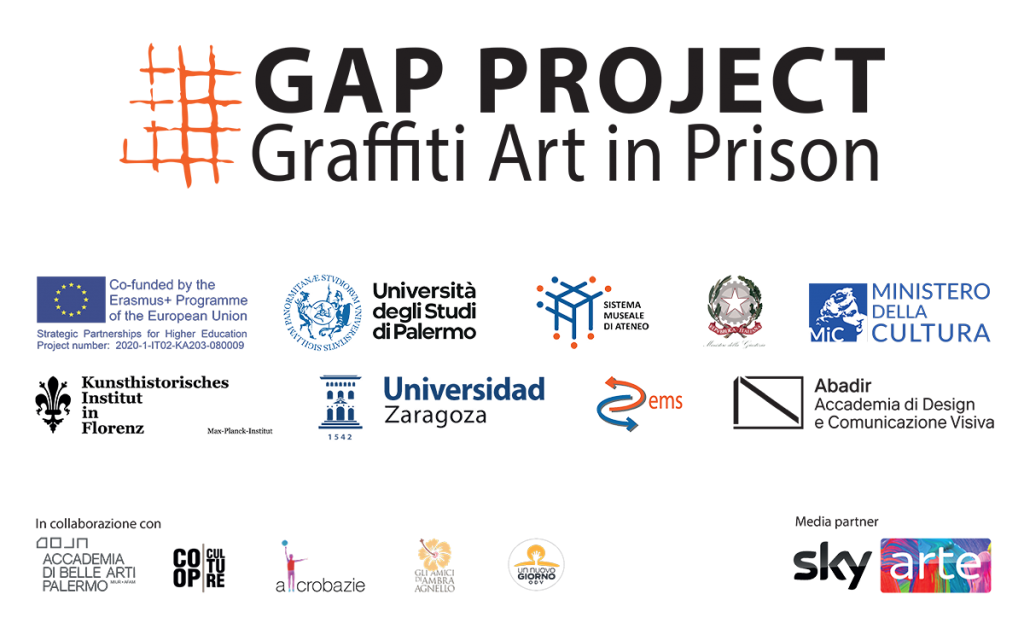Mirco Vannoni
In March 2016, an exhibition entitled “Street art. Banksy e co, l’arte allo stato urbano” was organized in Bologna, sponsored by – among others – the cultural institution Genus Bononiae. Its realization presupposed that various graffiti and murals in the city were to be detached from their original context in the city, relocated for display within the exhibition and, later, donated to the City of Bologna. That graffiti is, by now, recognized and accepted by the art world is nothing new. Indeed, nowadays, street art is the result of a layering of social, cultural, and material processes that – following Natalie Heinich and Roberta Shapiro’s proposal – we can call artification. The Bologna exhibition is a good example of the complex process that characterizes many contemporary practices, such as hip-hop or breakdancing, which originated outside the values and conventions of the artistic elite, but were slowly adopted into the world of high art.
To better understand what we are talking about, let us briefly go through the series of events that took place in the days leading up to the opening, which eventually caused the exhibition to end up in the news both nationally and on a global scale. It all started when the Italian street artist named Blu, whose works had been selected for the exhibition, decided to erase all his works made in Bologna over the years, in reaction to the process of privatization of street art for the exhibition.

One layer of gray paint and his work disappeared. A real strategy of disappearance. It mattered very little that the former president of Genus Bononiae, Fabio Roversi Monaco responded by claiming that the street artist’s works, illegally created on the sides of buildings he didn’t own, could be legally aquired simply by purchasing said buildings.
Looking closer, the complexity of the affair, also analyzed by the Wu Ming collective not only highlights the difficult relationship that exists in the contemporary between public works and the processes of privatization and museification, between the common good and processes of capitalist accumulation, but draws attention to how street art, over time, is no longer conceived as a frontier and urban mestizaje art carried out by subcultures (as in 1980s New York) but a form promoted by “strong” artistic-cultural institutions (such as Genus Bononiae, which receives its funding from the city’s banking foundation Carisbo).
Let us briefly step aside and try to understand under what conditions one can speak, in the contemporary moment, of the artification of graffitism. In his reflection on the work of art, Nelson Goodman rejects the idea of art defined from its essence. Shifting the focus of the question from what is to when is art, he develops a conceptual reframing, in which the idea of context and use of a piece takes center stage. For Goodman, what makes it possible to speak of an object or social practice as a work of art is not the intentionality of the artist or the genealogy of its production, but rather the conditions that come into play now such an object is mobilized by the public as an “aesthetic fact.” The objects of this process of artification are phenomena that arise in everyday space and that only by virtue of their activation, that is, recognition as a work of art, change their status of existence. Embracing Goodman’s idea, Heinich and Shapiro develop a reflection within the sociology of art that starts from a very specific question: When is artification? In the words of the French sociologists, artification is more “a question to be explored rather than a necessary outcome. It goes hand in hand with transformations of form, a transfiguration of things and people.” Artification, in this articulation, focuses on the dynamic processes that move along and across the boundary between Art and Non-art, highlighting the specific acts and tensions that accompany this transformation.

Returning to the case of Blu in Bologna, the act of erasing his own murals became quickly legible as a guerilla operation, as a protest against the museification of common goods such as street art, against a process of artification that defiantly brings to light the ethical-political stakes and questions that might otherwise have remained naturalized and obscured by the presumptions and discursive silences of the art world elite. As the Wu Ming collective also highlights:
“The erasure enacted by Blu is an art-guerrilla blow, struck against the symbolic reduction of street art in museum galleries and in the curricula of cultural workers. If one evaluates it with the parameters of guerrilla art, it is very difficult to question its effectiveness. It is enough to look at the immediate consequences it had, the argumentative angle in which it forced its opponents [the curators of the exhibition and the cultural institution Genus Bononiae], the embarrassment it caused them, the paucity in the reactions of local administrators that it brought out, and the contradiction it opened up not only in Bologna, but all over the world.”
Blu’s self-erasure was an act of resistance within the ongoing conflict between institution and the commons that could not be brushed under the rug and ended up resonating far outside the world of art experts and enthusiasts. In this context, Blu’s operation can be read as a strategy of de-artification that has its value precisely in short circuiting this process of erasure – the musealization, privatization, and patrimonialization of graffiti and murals.

Blu’s example draws our attention to processes of de-artification as a way to think critically about the relationship between graffitism and art, between its sacralization within museum institutions and its subversive charge as a tool of subjectification and speaking out in response to ethical-political issues that are very often depowered by common sense.
In conclusion, I would like to take up, once again, the distinction advanced by Goodman between “what is art” and “when is art.” Such a syntactic shift is in fact an invitation to continue thinking about what are the conditions that make an object a work of art.
Photo: Michele Lapini / www.zic.it
References
N. Goodman, Languages of Art: An Approach to a Theory of Symbols, Indianapolis 1968.
N. Goodman, Art in Theory and Art in Action, Cambridge (MA) 1984.
N. Heinich, R. Shapiro, eds., De l’artification: Enquêtes sur le passage à l’art, Paris 2012.
N. Heinich, R. Shapiro, When is artification?, in “Contemporary Aesthetics”, Special Volume 4, 2012.

